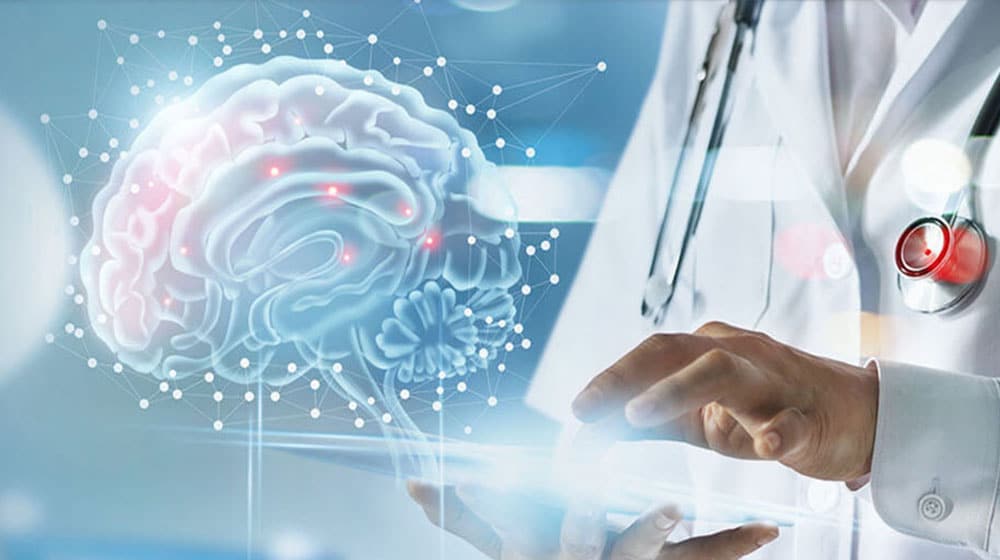May is Stroke Awareness Month, a time to learn about or brush up on symptoms, prevention and treatment of this life-threatening condition. In light of this, we’re sharing highlights from an informative talk neurologist Arbi Ohanian, MD, medical director of comprehensive stroke program at Huntington Health, gave on Senior Care Network’s Noon Hour about stroke, innovations in stroke care and its risk factors/prevention.
Stroke Stats
Dr. Ohanian shared some alarming stroke statistics*:
- Every 40 seconds, someone in the U.S. suffers from a stroke.
- Annually, almost 800,000 strokes occur in the U.S. (i.e., 1 in 6 Americans).
- It’s the leading cause of disability.
- It’s the fifth leading cause of death.
- About 90% of strokes are due to modifiable risk factors.
- The risk of stroke increases after the age of 65.
- Due to an aging population and obesity rates, stoke cases will double every decade, making stroke a public health crisis.
What Is a Stroke?
Dr. Ohanian described a stroke as “the plumbing of the brain going wrong,” and explained the two types of strokes that can occur: an ischemic stroke, where the “pipe” gets clogged, and a hemorrhagic stroke, where the “pipe” bursts. In medical terms, ischemic stroke, which is the most common type of stroke, occurs when a blood clot blocks blood flow in an artery (in the neck or skull) that has been narrowed by cholesterol and plaque buildup. This prevents the brain from getting oxygen and nutrients. A hemorrhagic stroke occurs when a blood vessel bursts, causing bleeding inside or around the brain, which damages brain cells.
He also mentioned another type of stroke condition called a transient ischemic attack (TIA), which he referred to as “one of the most underappreciated conditions in medicine.” With TIA, a blood clot temporarily blocks a blood vessel, depriving the brain of oxygen and blood flow and briefly causing symptoms, like difficulty speaking. But then the blood clot breaks up, blood flow is reinstated, and the symptoms go away. “A lot of times, people will just ignore it. Unfortunately, that’s a very important finding,” he said. Telling a doctor about these symptoms can uncover conditions that could lead to a major stroke, like a narrowed carotid artery or atrial fibrillation (i.e., abnormal heartbeat). With this information, doctors can manage the condition and prevent a major stroke.
Time is Brain
What happens during a stroke? Each minute during a stroke, a patient loses about 2 million neurons,14 billion connections between nerve cells and about 7.5 miles of nerve cell fibers (the “wiring”). That is why doctor’s say, “Time is brain.” So immediate intervention is vital.
The Symptoms of Stroke: BE FAST
The well-known acronym, BE FAST, spells out the abrupt onset of stroke symptoms and reminds us to seek medical help immediately. Dr. Ohanian broke them down:
Balance: Sudden loss of balance.
Eyes: Sudden vision loss.
Face: When asked to smile, one side of the face droops.
Arm: When asked to lift both arms, one arm drifts downward after lifting it or doesn’t raise at all.
Speech and language: Slurred speech; difficulty speaking (can’t speak or sounds like gibberish); difficulty repeating a simple sentence (e.g., The sky is blue.); difficulty understanding communication.
Time: Call 911 if someone has any of these symptoms.
What Treatments Are Available?
Up until 1990, hospitals had little to offer stroke patients other than aspirin, which was minimally effective. Today, hospitals have many treatments, and Huntington Health, which provides a Joint Commission certified comprehensive stroke center, can quickly treat patients with quality, higher-level interventions in an organized process. Here are possible treatments for stroke after a patient has undergone imaging:
- Tissue plasminogen activator (TPA): A drug that dissolves blood clots; reopens 40% of arteries.
- Retrievers: Devices that pull clots out of a blocked artery; reopens 85% of arteries.
- Aspiration devices: Instruments that vacuum a clot out of a blocked artery; reopens 85% of arteries.
Risk Factors and Prevention for Stroke
Strokes are highly preventable if the following risk-factors are mitigated or managed:
- High blood pressure.
- High cholesterol.
- Smoking.
- Atrial fibrillation.
- Heavy alcohol use.
Along with eating a healthy diet, reducing alcohol and avoiding smoking, Dr. Ohanian shared one last important tip for stroke prevention: “Exercise is more effective than all the medications we give – just 30 minutes a day of brisk walking – if you do that, it goes a long way.”
To learn more about stroke, click here.
*American Heart Association
 English
English Espanol
Espanol 简体中文
简体中文 Tagalog
Tagalog հայերեն
հայերեն 한국인
한국인 Tiếng Việt
Tiếng Việt فارسی
فارسی русский
русский 日本
日本 عربي
عربي